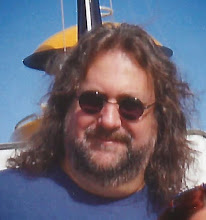 Wonder Woman #188 (On Sale: February 26, 1970) has a cover by Mike Sekowsky and Dick Giordano that is a wonderful return to the heavy bondage roots of classic Golden Age Wonder Woman covers.
Wonder Woman #188 (On Sale: February 26, 1970) has a cover by Mike Sekowsky and Dick Giordano that is a wonderful return to the heavy bondage roots of classic Golden Age Wonder Woman covers.We begin with our cover-story "Cyber's Revenge" written and penciled by Mike Sekowsky and inked by Dick Giordano. Continuing from last issue, Diana and Ching have been pulled from the waters of Hong Kong Harbor as the Junk that was the headquarters of Dr. Cyber burns. The badly burned Cyber and her associate Lu Shan, maybe I Ching's daughter, escaped with a new power source to be used to power Cyber's earthquaker devices. Ching was shot by Lu Shan and is rushed to the hospital, while Diana and Patrick McGuire meet at the police station and go over the events thus far.
Suddenly Hong Kong is hit by an earthquake and Diana and Patrick head for the streets where they are shot at by a strange car carrying Lu Shan and a assortment of Cyber henchmen. They escape Cyber's people by hiding under some wreckage, when another quake hits Patrick is knocked unconscious. Meanwhile Cyber sends a message to the wold that she must be declared supreme ruler of Earth or she will level every city on the planet with her earthquakers.
Lu Shan and her thugs locate Diana but she overpowers her and chases off the thugs and "convinces" Lu Shan to show them where one of the earthquakers is located. However, suspecting a trap, Diana wants Lu Shan to throw the power switch to turn off the machine and when she refuses Diana once again overpowers her. Eventually Lu Shan is convinced to turn off the earthquakers safely, bypassing the self-destruct feature that she was hoping would catch Diana.
Back at the inspector's office, Diana gets the location of the other earthquakers out of Lu Shan and while the inspector's men go after most of the machine, Diana and Patrick take the last one themselves. They race across the destroyed city to the location of the final earthquaker as it is turned on once again. They make it into the facility but run afoul of a trap door.
When they awaken they are chained to the ceiling and a heavily bandaged Dr. Cyber is there. She removes her bandages and shows Diana the mess she made of her face. Diana turns her face away from the sight and Cyber grabs her and turns Diana toward her. Which is what Diana hoped she would do, come in close enough so that Diana could knock her out with a swift kick to the face. Using the training she was taught by I Ching Diana is able to free herself but then is attacked by Cyber's personal guards, whom she quickly defeats.
As Diana frees Patrick Cyber awakens and attacks her with a sword, but Diana uses the chains to keep Cyber at bay and knock her into a power supply on the earthquaker. As Cyber fries, she pushes the self-destruct button. Diana and Patrick barely make it out alive. From hiding we see Lu Shan, vowing to get revenge. Diana and Patrick then begin helping those wounded in the quakes.
Days later she and Patrick make it to the hospital to check in on I Ching only to find that he is gone. A visitor came to his room and spoke something of Lu Shan and how she had crossed the border into Red China. Ching seems to have followed her. Reprinted in Diana Prince:Wonder Woman Vol. 2 TPB.
We get another great Sekowsky/Giordano teaser page for the next issue followed by a two page filler, "Crime Does Not Pay!" also by Mike Sekowsky and Dick Giordano. This little short is about a pick-pocket who unwisely tries to pick Diana's pocket!
Edited by Mike Sekowsky.









































